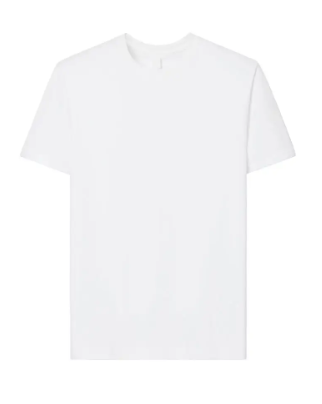Hlavní faktory při volbě Mužské tričko Materiály
Dýchavost & řízení vlhkosti
Volba správné látky pro trička hraje velkou roli, když stoupne teplota, zejména na místech, kde se teplo kombinuje s vysokou vlhkostí. Přírodní vlákna, jako je bavlna, propouštějí vzduch, stejně jako některá syntetická vlákna, díky čemuž oblečení příjemněji sedí na těle, protože nezachycuje teplo u pokožky. Toto je zvlášť důležité během cvičení nebo práce venku, kde přirozeně dochází k pocení. Látky navržené tak, aby odváděly vlhkost od těla, zvládají pot mnohem lépe než jiné, což zásadně ovlivňuje pocit pohody během dne. Například polyester ve skutečnosti brání tomu, aby se mezi vrstvami oblečení hromadil pot, takže lidé zůstávají déle suchí. Každý, kdo nosil tohoto typu trička, ví z vlastní zkušenosti, jak je mnohem pohodlnější v horkém počasí ve srovnání s běžnou bavlnou.
Odolnost a délka života
Jak dlouho Trikot trvání opravdu závisí na tom, z čeho je vyrobeno. Látky jako jsou směsi polyesteru a hustě utkaná bavlna vydrží mnohem lépe běžné používání ve srovnání s levnějšími materiály. Když člověk utratí peníze za tričko kvalitní výroby, obvykle z něj má více nošení, než začnou vznikat díry nebo blednout barvy. Laboratoře testovaly různé látky a zjistily, že trička vyrobená z lepších materiálů prostě nemusí být tak často nahrazována. Rozdíl hraje roli zejména při činnostech jako je zahradničení, cvičení v posilovně nebo dokonce jen pohyb po celý den, aniž by člověk neustále musel mít starost o poškození oblečení.
Pohodlí & citlivost pokožky
Úroveň pohodlí oblečení opravdu závisí na tom, jaký je materiál na omak při nošení přímo na kůži. Lidé s citlivou pokožkou by pravděpodobně měli volit jemnější materiály, jako je bavlna z ekologického pěstování, protože tyto materiály obvykle méně dráždí. Výzkum naznačuje, že některé syntetické tkaniny mohou u lidí se zranitelnou pokožkou skutečně způsobovat nepohodlí. Proto hraje značnou roli výběr materiálů, které příjemně působí na tělo a vhodně vycházejí vstříc různým typům pokožky. Pohodlí však závisí nejen na jemnosti materiálu. Dále je důležité, jak sedí tričko na těle nositele, a tento aspekt závisí také na tom, zda se materiál snadno natahuje nebo zda zůstává po obléknutí tuhý.
Klimatické aspekty
Druh košile, kterou nosíme, opravdu závisí na tom, kde žijeme a s jakým počasím se dennodenně potýkáme. Bavlna funguje skvěle, když je teplo a sucho, protože vzduch se jí snadno prohání, zatímco vlna bývá oblíbenou volbou, když teploty klesnou níže. Vědomí toho, jaké klimatické podmínky nám naše lokální oblast přináší, je rozhodující při výběru košil. Toto základní pochopení umožňuje lidem vybírat látky, které skutečně pracují s počasím, a ne proti němu, což znamená větší pohodlí po celý den. Věnování pozornosti těmto věcem prostě dává smysl, pokud chceme oblečení, které se cítí dobře bez ohledu na to, co nám matka příroda připraví.
Bavlna: Zlatý standard pro průvanitou pohodu
Druhy bavlny (Pima, organická, kartáčovaná)
Vědět, jaký druh bavlny se používá na výrobu triček, je rozhodující při výběru látky. Vezměte si například Pima bavlnu, která pochází především z Peru a Kalifornie. Její extra dlouhé vlákna jí dodávají ten charakteristický hedvábný pocit, který si lidé tak oblíbili. Potom je tu organická bavlna pěstovaná bez pesticidů a syntetických hnojiv, což je dnes pro mnoho ekologicky uvědomělých zákazníků klíčové. Česaná bavlna prochází procesem, při kterém se odstraňují krátká vlákna a nečistoty, čímž vzniká hladší a obecně kvalitnější materiál než u běžné bavlny. Většina lidí, kterým záleží na tom, jak se jejich oblečení cítí na pokožce, si všimne rozdílu mezi těmito odrůdami. Někteří dávají přednost měkkosti Pima bavlny, zatímco jiní volí organické varianty, protože chtějí podporovat udržitelné zemědělské postupy. Trh rozhodně zažil posun směrem ke speciálním druhům bavlny, protože spotřebitelé stále více sledují, z čeho jsou vyráběny jejich každodenní oblečení.
Výhody: Měkost & Ekologickost
Lidé mají rádi bavlnu, protože je příjemně měkká na pokožku a prostě pohodlná nosit. Když mluvíme o ekologické bavlně, přidává se další důvod, proč si ji oblíbit – při její výrobě neubližujeme planetě, což ji činí oblíbenou mezi lidmi, kteří si dělají starosti o životní prostředí. Tržní trendy ukazují, že tyto ekologické látky se postupně stávají běžnějšími, protože stále více zákazníků hledá oblečení, jehož pořízení neznamená doslovně „prodání duše“. Bavlna zůstává pro mnoho lidí tou nejlepší volbou právě proto, že spojuje veškeré pohodlí s ohleduplností k naší planetě – a to je něco, co si dnes mnoho milovníků módy přeje, aniž by museli obětovat styl nebo kvalitu.
Nehody: Smykání & Praskání
Bavlna má spoustu dobrých vlastností, ale zároveň i některé zásadní nevýhody, zejména smrskávání a mačkání. Většina lidí ví, že bavlněné oblečení má tendenci se po praní smrsknout, často natolik, že už celkově nesedí. A přiznejme si, bavlněné oděvy se rády mačkají, což znamená, že je musíte neustále žehlit, abyste udrželi jejich úhledný vzhled. Tyto problémy se opakují v zákaznických recenzích napříč různými trhy. Když si zákazníci uvědomí, co vše bavlněné oděvy znamenají, mohou lépe zvážit jejich výhody a nevýhody. Měkkost a ekologické výhody rozhodně hrají roli, ale stejně tak záleží i na tom, kolik práce stojí udržení těchto oděvů v přijatelném stavu po týdnech nošení.
Syntetické a kombinované látky pro výkon
Polyester: Odvedení vlhkosti a rychlé sušení
Polyester je známý tím, že velmi dobře odvádí vlhkost, což ho činí ideálním pro mužské trička určené na cvičení. Látka skutečně odvádí pot z pokožky a umožňuje jeho rychlé odpaření, takže lidé zůstávají během svých aktivit chladnější a sušší. Pro každého, kdo hraje sporty nebo provádí náročné cvičení, je zůstat suchý velmi důležité, a přesně v tom polyester exceluje. Výzkumy opakovaně ukazují, že pokud jde o řízení pocení, polyester zcela převyšuje většinu jiných materiálů. Proto si právě tolik sportovců a návštěvníků posiloven volí právě oděvy z polyesteru. Když výrobci použijí polyester do mužských triček, nabízejí spotřebitelům přesně to, co od sportovního oděvu očekávají: pohodlí bez újmy na výkonu.
Směsi bavlny a polyestru: vyvážená trvanlivost
Když se bavlna smíchá s polyesterem, výrobci získají trička, která jsou trvanlivější a odolná proti mačkání, aniž by ztratila svou měkkost či komfort. Tato kombinace v podstatě prodlužuje dobu, po kterou tato trička udrží svůj vzhled, a proto si mnoho lidí vybírá právě tato trička pro každodenní nošení, ale také je nosí během cvičení. Z pohledu na to, co se v poslední době děje ve prodejnách, je zřejmé, že zájem o tyto smíšené látky roste, protože zákazníci hledají oblečení, které je vhodné pro volnočasové aktivity ve městě, ale zároveň odolá i náročnějším podmínkám. Většina lidí považuje tyto směsi za ideální kompromis mezi dýchacími vlastnostmi bavlny a lepším udržením tvaru po opakovaném praní ve srovnání s čistou bavlnou.
Tri-Blends: Pružnost & Hedvábné Spadnutí
Tri-blendové látky se staly skoro nejlepší volbou pro lidi, kteří si chtějí vybrat něco pohodlného a zároveň stylového, díky kombinaci bavlny, polyesteru a rayonu. Co činí tyto směsi tak výjimečnými? No, hezky se roztahují, aniž by ztratily tvar, a splývají po těle jako hedvábí. Lidé milují jejich měkkost na pokožce a vzhled při nošení – většina zákazníků říká, že sedí prostě lépe než běžné košile, a to bez ohledu na konkrétní velikost. Odborníci z průmyslu poznamenávají, že v poslední době stále více značek přechází právě na tri-blend technologii, protože tyto látky fungují skvěle v různorodých situacích – od lenošení doma až po vyřizování věcí ve městě. domů muži se k nim zvlášť přiklánějí pro jejich spojení pohodlnosti a elegantního vzhledu, který zároveň zůstává dostatečně nenáročný pro každodenní nošení.
Specializované látky pro pokročilé potřeby
Merinová vlna: Luxus s regulací teploty
Co činí merinovou vlnu tak výjimečnou? No, reguluje tělesnou teplotu lépe než většina dostupných materiálů. Udrží chlad, když je venku teplo, a zároveň teplo, když je chladno. Tento materiál také poměrně dobře odvádí pot z pokožky, čímž udržuje příjemné sucho i během dlouhých výstupů v přírodě nebo letů přes časové pásmo. Ti, kdo tráví hodně času venku, o tom vědí. Většina lidí, kteří nosí merinovou vlnu, oceňuje především její měkkost na pokožce ve srovnání s běžnou vlnou. Někteří dokonce uvádějí, že v ní mohou spát bez podráždění. Tato skutečnost je potvrzena i výzkumy. Studie zveřejněná v loňském roce ukázala, že lidé v oděvech z merinové vlny zůstávali pohodlnější v teplotních rozmezích od mrazivých až po dusné. Pro každého, kdo hledá něco, co pracuje na plný výkon, ale zároveň neobětuje pohodlí, zůstává merinová vlna jednou z nejlepších možností, které dnes máme k dispozici.

Bambus: Ekologicky vědomý & antibakteriální
V poslední době si více lidí všímá textilie z bambusu díky jejímu ekologickému výrobě a vynikajícím antibakteriálním vlastnostem. To vysvětluje, proč si mnoho ekologicky uvědomělých zákazníků vybírá právě tuto látku místo jiných materiálů. Proč? Bambus totiž pochází z rostlin, které rostou velmi rychle a potřebují mnohem méně vody než bavlněné pole. Kromě toho nevyžadují téměř žádné postřiky pesticidy. Další velkou výhodou pro lidi, kteří cvičí nebo tráví čas venku, je, že bambus přirozeně potlačuje bakterie, což znamená méně zápachu na oblečení po cvičení nebo dlouhých túrách. Uživatelé, kteří nosí košile z bambusu, uvádějí, že mají příjemný pocit na pokožce, částečně proto, že látka zůstává i po mnoha praních měkká a umožňuje lepší průchodnost vzduchu než většina jiných alternativ. Právě všechny tyto faktory dohromady pomohly bambusovým textiliím získat popularitu mezi lidmi, kteří hledají ekologické oblečení bez újmy na kvalitě či pohodlí.

Základní péče pro délku života látky
Nejlepší postupy praní podle materiálu
Jak dlouho naše trička vydrží, opravdu záleží na tom, jak se o ně staráme, zejména pokud jde o zvyklosti při praní. Směsi bavlny vyžadují jinou údržbu než syntetické látky a znalost tohoto rozdílu činí obrovský rozdíl v udržování oblečení ve dobrém stavu. Většina lidí zjistí, že studená voda funguje nejlépe téměř pro všechno, protože horká voda má tendenci rychleji opotřebovávat vlákna a s časem vyblednout barvy. Některé rychlé testy v laboratořích prádelních dokonce ukazují, že správné metody praní mohou prodloužit životnost trička o měsíce nebo dokonce roky. Když lidé skutečně přečtou tyto pokyny k ošetřování a dodržují je, nakonec ušetří peníze, protože jejich oblíbená trička tak rychle neskončí v koši.
Sušení a úložení pro prevenci poškození
Způsob, jakým sušíme a ukládáme naše trička, rozhoduje o tom, jak dlouho budou vypadat dobře. Většina lidí zjistí, že sušení triček na vzduchu místo použití sušičky pomáhá předcházet smrštění nebo poškození tkaniny v průběhu času. Pokud jde o uskladnění, je lepší oblečení skládat rovně místo zavěšovat ho, čímž se zabrání nepříjemnému roztahování v oblasti ramen. Mnoho průvodců prádelnictví a dokonce i babička vám řekne, že tato doporučení hrají velkou roli při údržbě tkanin. Pravda je taková, že pár minut navíc strávených správnou údržbou se opravdu vyplatí. Naše oblíbená trička zůstanou nositelná mnohem déle a nebudou po pár praních vypadat jako odpadky z popelnic.
Nejčastější dotazy
Co je průchozmost v látkách pro trička?
Průchozmost označuje schopnost látky umožnit cirkulaci vzduchu, což zvyšuje pohodlí, zejména v teplém klimatu, protože umožňuje kůži dýchat.
Proč jsou směsi bavlny a polyesteru oblíbené pro trička?
Směsi bavlny a polyesteru poskytují zvýšenou odolnost, odolnost proti střásání a pohodlného dotyku, čímž jsou ideální jak pro kasuální, tak i pro aktivity.
Jak výhody merinové vlny ovlivňují nositele triček?
Merinová vlna reguluje teplotu, udržuje nositele pohodlné v různém počasí a efektivně odvádí vlhkost od kůže.
Co dělá bambusovou tkaninu ekologicky přátelskou?
Bambus vyžaduje méně vody a pesticidů ve srovnání s bavlnou a nabízí imponující antibakteriální vlastnosti, což ho činí udržitelnou volbou látky.



